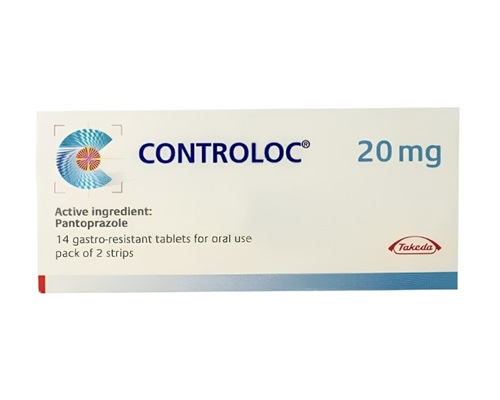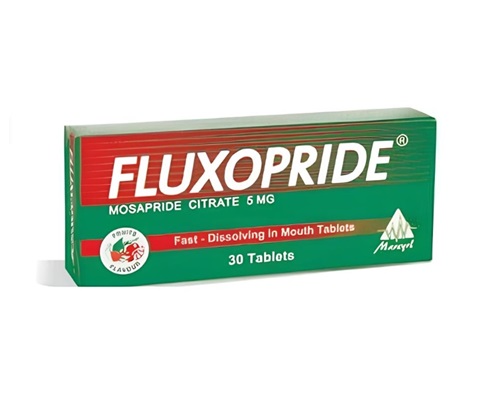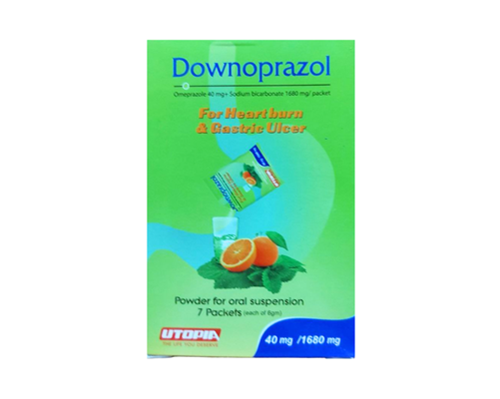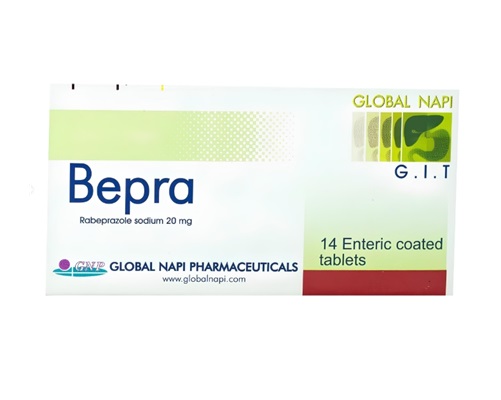Description
Trade name:
Controloc
Compound:
Each tablet contains:
Pantoprazole 20 mg
Excipients: mannitol – 26.84 mg, crospovidone type B – 22 mg, sodium carbonate anhydrous – 5 mg, povidone K25 – 4 mg, crospovidone (type A) – 3 mg, calcium stearate – 1.6 mg.
Properties:
H+-K+-ATPase inhibitor. Blocks the final stage of hydrochloric acid secretion, reduces the level of basal and stimulated (regardless of the type of irritant) secretion of hydrochloric acid in the stomach. In duodenal ulcer disease associated with Helicobacter pylori, such a decrease in gastric secretion increases the sensitivity of the microorganism to antibiotics. Pantoprazole has its own antimicrobial activity against Helicobacter pylori.
Indications:
Peptic ulcer of the stomach or duodenum in the acute phase, Zollinger-Ellison syndrome, eradication of Helicobacter pylori (in combination with antibacterial therapy), reflux esophagitis.
Method of administration and dosage:
Take one tablet 1 hour before meals with water. Follow your doctor’s instructions.
Children over 6 years: Dose from 15 to 40 kg 20 mg once a day (for 8 weeks). Dose for 40 kg – 40 mg once a day (for 8 weeks)
Adults and children over 12 years of age. Treatment of gastroesophageal reflux disease, reflux esophagitis: 1 tablet of pantoprazole per day. In some cases, the dose can be increased to 2 tablets of pantoprazole per day. Usually 4 weeks are required to treat reflux inflammation of the esophagus. If necessary, the duration of treatment is increased to 8 weeks.
Treatment of gastric ulcer: 1 tablet of pantoprazole per day. In some cases, the dose can be increased to 2 tablets of pantoprazole per day. Usually, 4 weeks are required to treat gastric ulcer. If necessary, the duration of treatment is increased to 8 weeks.
Contraindications:
Hypersensitivity to the components of the drug, hepatitis and cirrhosis of the liver, accompanied by severe liver failure.
Children under 6 years of age.
Pregnancy and lactation period.
Precautions:
Before starting therapy, the possibility of malignant neoplasms in the stomach and esophagus should be excluded, since the use of pantoprazole reduces the severity of symptoms and may delay the establishment of the correct diagnosis. The diagnosis of reflux esophagitis requires mandatory endoscopic confirmation. When used in patients with impaired liver function, the activity of liver enzymes in the blood plasma should be regularly monitored and, if it increases, pantoprazole should be discontinued.
Side effects:
From the hematopoietic system: rarely – agranulocytosis; very rarely – thrombocytopenia, leukopenia, pancytopenia.From the nervous system: uncommon – headache, dizziness; rare – taste disturbances; frequency unknown – paresthesia.
Psychiatric disorders: uncommon – sleep disorders; rare – depression (including exacerbation of existing disorders); very rare – disorientation (including exacerbation of existing disorders); frequency unknown – hallucinations, confusion (especially in predisposed patients), as well as possible exacerbation of symptoms if they existed before the start of therapy.
From the organ of vision: rarely – blurred vision.
From the digestive system: often – polyps of the fundic glands of the stomach (benign); uncommon – diarrhea, nausea, vomiting, bloating, flatulence, constipation, dry mouth, discomfort and abdominal pain.
From the liver and biliary tract: uncommon – increased activity of liver enzymes (transaminases, γ-glutamyl transferase); rare – increased bilirubin levels; frequency unknown – hepatocellular damage, jaundice, hepatocellular insufficiency.
From the urinary system: frequency unknown – interstitial nephritis.
From the musculoskeletal system: uncommon – fracture of the wrist, hip, spine; rare – arthralgia, myalgia.
Metabolism disorders: rare – hyperlipidemia, change in body weight; frequency unknown – hyponatremia, hypomagnesemia.
From the immune system: rarely – hypersensitivity reactions (including anaphylactic reactions and anaphylactic shock), angioedema.
From the reproductive system: rarely – gynecomastia.
From the skin and subcutaneous tissues: uncommon – exanthema/rash, itching, dermatitis; rare – urticaria; frequency unknown – malignant exudative erythema (Stevens-Johnson syndrome), exudative erythema multiforme, toxic epidermal necrolysis, photosensitivity, subacute cutaneous lupus erythematosus.
General reactions: uncommon – weakness, fatigue, general malaise; rare – increased body temperature, peripheral edema.
Storage method:
In a dry, dark place at a temperature not exceeding 30 degrees.
Package:
The cardboard box contains 2 blisters of 7 tablets and paper instructions.









